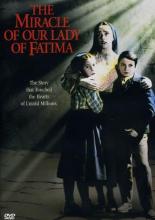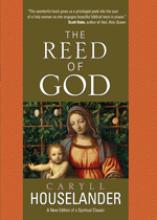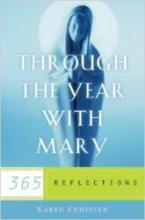The Blessed Mother
The Miracle of Our Lady of Fatima
This is a full length color movie of the story of Our Lady's apparitions to three children in Fatima, Portugal in 1917. It is faithful to the true story with just enough "Hollywood" to make it entertaining and likable even for the little ones. The scene where the three children are interrogated by the government officials might be is a little intense, so I wouldn't recommend having your little ones watch it without supervision. Otherwise, it's a great film for the whole family. My daughter (almost 6 years old) received this for Easter (Thank you Grandma! : ) and absolutely loved it. I was very impressed with how accurate the important aspects of the story are told. I especially love how they handled the miracle of the sun on October 13, 1917 and how they portray two of the miracles that occurred at the time.
The "jokester" character of Hugo is a Hollywood creation.
Update from webmaster, March 2024: The 2006 re-release is pictured here, and is available on DVD or streaming services.
The Reed of God
Sometimes it may seem to us that there is no purpose in our lives, that going day after day for years to this office or that school or factory is nothing else but waste and weariness. But it may be that God has sent us there because but for us Christ would not be there. If our being there means that Christ is there, that alone makes it worthwhile. (pg. 60)
We must be swift to obey the winged impulses of His Love, carrying Him to wherever He longs to be; and those who recognise His presence will be stirred, like Elizabeth with new life. They will know His presence, not by any special beauty or power shown by us, but in the way that the bud knows the presence of the light, by an unfolding in themselves, a putting forth of their own beauty. It seems that this is Christ’s favourite way of being recognised, that He prefers to be known, not by His own human features, but by the quickening of His own life int he heart, which is the response to His coming. (pgs. 62-63)
If such is the beauty of the world to ordinary children, what must it have been to the Mother of God, when her whole being was folded upon the unborn Christ within her? He was completely her own, utterly dependent upon her: she was His food and warmth and rest, His shelter from the world, His shade in the Sun. She was the shrine of the Sacrament, the four walls and the roof of His home. Yet she must have longed to hold Him between her hands and to look into His human face and to see in it, in the face of God, a family likeness to herself Think of that! But perhaps you cannot, unless you happen to be a young priest newly ordained, waiting for the moment when you will hold in your hands the first Host that you have consecrated at your first Mass. … Each work of her hands prepared His hands a little more for the nails; each breath that she drew counted one more to His last. In giving life to Him she was giving Him death. All other children born must inevitably die; death belongs to fallen nature; the mother’s gift to the child is life. But Christ is life; death did not belong to Him. In fact, unless Mary would give Him death, He could not die. Unless she would give Him the capacity for suffering, He could not suffer. He could only feel cold and hunger and thirst if she gave Him her vulnerability to cold and hunger and thirst. He could not know the indifference of friends or treachery or the bitterness of being betrayed unless she gave Him a human mind and a human heart. That is what it meant to Mary to give human nature to God. He was invulnerable; He asked her for a body to be wounded. He was joy itself; He asked her to give Him tears. He was God; He asked her to make Him man. He asked for hands and feet to be nailed. He asked for flesh to be scourged. He asked for blood to be shed. He asked for a heart to be broken. (pgs. 72-73)
If Christ is formed of our lives, it means that He will suffer in us. Or, more truly, we will suffer in Him. “And He was made man.” Our Lady saw at once what was meant in her case: supernaturally, He was made herself. If He is made man in you, He will be made you; in me, me. It is extremely difficult to lay hold of this fact. It is very hard not to think of a kind of mystical Christ just beside us, or just in front of us, suffering with infinite patience and joy, being obedient, humble, persevering, fulfilling His Father’s will. It is really difficult to realise that if He is formed in our life we are not beside Him but in Him; and what He asks of us is to realise that it is actually in what we do that He wants to act and to suffer. (pgs. 76-77)I read this on retreat about a month ago (a silent, Ignatian retreat and my first retreat in 20 years – it was wonderful!) because my spiritual director had recommended it and I loved how perfectly it tied into the talks on the spiritual exercises and the book I happened to be reading alongside it – Does Jesus Know Us? Do We Know Him? by Hans Urs Von Balthasar.



